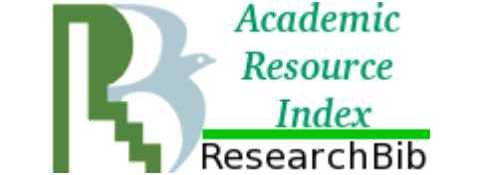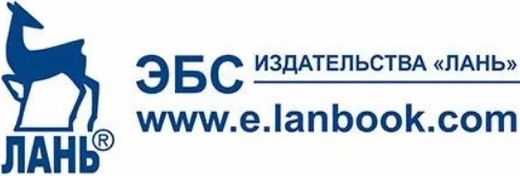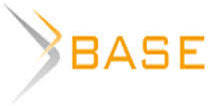The Agricultural development in Bulgaria, EU New Member States and The Kursk-Belgorod-Voronezh Russian Regions: A Comparison
Abstract
The goal of the article is to compare agricultural development in Bulgaria, EU New member states (EU-13) and Kursk-Belgorod-Voronezh Russian Regions (KBV Region) between the period of 2003 and 2017. The problem’s current relevance is unquestionable as many changes have been taking place within the early 21-st century. The regional selection has been based on specific agro-economic indicators, whose analysis can help contribute to a better understanding of current transformations occurring within this key part of economic development. It should be noted, that all member states are obliged to implement the EU Commission’s Common Agricultural Policy (known as CAP) which vastly influences the evolution of the farming industry amongst all EU constituents, including several macro-level indicators common to this sector. The results of the research in this article show an interesting transition, along with specific consequences for the Bulgarian agricultural economy in comparison to the average level present within EU-13 states as well the KBV Region.
Введение
The agriculture is one of the main industries in the economy and its smooth development is very important for each economy. The research in this article is aimed to comparative analyze in few specific agrarian macro indicators between Bulgaria and EU-13 on one side and Bulgaria and Kursk-Belgorod-Voronezh Russian Regions (KBV region) on other. As CAP is one of the oldest policies in the European Union and has a significant role in shaping and evolving the agricultural sector, special attention to this policy must be made. This article is divided into three parts, which combines statistical data concerning the agricultural economic within Bulgaria, EU-13 member states[1] and the Kursk-Belgorod-Voronezh Russian Regions (KBV Region).
The analysis is based on data taken by Eurostat and uses the 2010 real value of agricultural products. As the research is still ongoing, the use of real value statistics is encouraged in order to create a better comparison over time. I would like to express my gratitude to the colleagues at Belgorodski University for their cooperation in collecting the data for the KBV Region.
1. Common agricultural policy, its evolution, and influence on agricultural holdings.
Основная часть
The year 2018 marks the fifteenth anniversary of the proposed plan to restructure and modernize the European agricultural economy[2]. Known as “Mansholt Plan”[3], having been named after Sicco Mansholt who served as the European Commissioner for Agriculture from 1958 to 1972, this proposal would later form the basis of the European Union’s current Common Agricultural Policy (widely known as CAP), and continues to influence the agricultural sectors of the various EU member nations – their rural economies, their labor force and the restructuring of their holdings – to this day. The plan provides a deep and well-structured image of the European Economic Community (EEC), alongside current problems as well as with potential measures to solve them. The key recommendations of what was immediately dubbed the ‘Mansholt Plan’ included:
- to provide co-financed monetary incentives to reduce the number of farmers by 50% amongst member nations by encouraging them to leave the agricultural sector during the 1970s through early retirement or retraining programs so that they may attain another form of work; ideally in local markets;
- to create job positions in agricultural and semi-agricultural regions to facilitate this transition;
- to ensure that much of the land released by this transition is added to established agricultural holdings that provided approved development plans for expansion towards an established minimum efficient scale (circa. 80 to 120 hectares for arable operations or between 40 and 60 for dairy cows);
- to ensure that government investment aids are only granted to such farms, or to farmers who chose to merge with other agricultural estates to create a large jointly managed enterprises;
- to set the target of removing at least five million hectares from the agricultural sector by 1980 (a reduction of about seven per cent) and using the land largely for forestry, with the remainder being used for recreation;
- to provide slaughter premiums and other payments to quickly reduce the community’s dairy herd by three million head (a reduction of about fourteen per cent);
- to improve the market conditions through various measures to encourage the formation of producer groups to co-ordinate sales.
These few recommendations reveal the unquestionable importance of agriculture for the EEC. Decades after this plan was first proposed, CAP has further evolved – being reformed several times – so as to be more successful in providing answers to questions concerning food security, sustainable use of natural resources and the balanced development of Europe’s rural areas. An evaluation requires an assessment as to whether, and to which extent, the direct support schemes introduced by the 2003 CAP reform have effected structural changes in farming in terms of land concentration, land use, and the management structure of such holdings[4]. The primary objectives of direct support initiatives are to help provide a decent standard of living for European farmers and agricultural workers, as well as a varied, stable, and safe food supply for its citizens. The system of direct payments introduced on the 1st January 2005 has provided incentives to farmers in looking for more efficient methods concerning the allocation of production factors, better adaptation strategies, forms of organisation as well as production choices, including the possible abandonment of farming as an option[5].
CAP has three inter-connected routes to help it reach these goals[6]: income support for farmers (by so-called “direct payments”); market regulations to combat (for example) a sudden drop in prices, and rural development. The aim of these pillars (direct payments and rural development) is to contribute to the EU’s primary economic priorities; namely job creation, increasing economic growth, combating climate change, and encouraging sustainable development. Naturally, CAP must operate within a sufficient budget and that is why the Multiannual Financial Framework (MFF) 2014-2020 – the European Union’s seven-year spending plan which is the long-term vision of the EU for the development of the process of integration and provides the means to implement integration projects and policies[7] – allocates 38% of its total amount to CAP implementations to finance expenditure for market measures, direct payments and rural development programs. Direct payments amount to approximately €293 billion for the 2014-2020 period, or 72% of the overall budget allocated for the CAP. This equates to spending more than €41 billion a year for direct payments. Moreover to achieve the long-term goals set by CAP, the reform focuses on supporting the sustainability and competitiveness of the agricultural sector by improving the efficiency and target strategy of the policy’s implementations.[8]
The new policy’s framework, which addresses each of these issues individually, is presented below:
- Enhanced competitiveness of EU agriculture – adaptation of policy implementations to further increase the range of market based decision by farmers.
- A more sustainable EU agriculture – a focus on maintaining natural resources through mandatory agriculture standards to improve environmental performance via more sustainable production methods.
- A more effective and efficient CAP – through equitable direct payments and efficient targeting strategies.
- A more strategic approach to rural development spending – the key characteristics of EU architecture, the Rural development policy, has remained untouched by the reform.
The challenge is in finding the right balance between effectiveness, efficiency and simplicity concerning individual legislation. Member States have an individual responsibility in taking advantage of the many opportunities offered by CAP and in setting up economic strategies for their agricultural sectors[9]. The informed decisions made by EU members will ensure their competitiveness and sustainability in this key part of the economy over the long-term.
A brief overview of the CAP proves its influence and importance on the agriculture sector throughout all EU member-states. The following analysis concentrates on the first fifteen years of the 21-st century. In figure 1, the “standard output” of the EU has been calculated and is compared between the EU member states, who were EU constituents before the year 2004 (EU-15) and all EU nations who joined after 2004 (EU-13). It shows not only a huge difference between these groups but also a general increase among all member nations throughout the past decade. In fact, there isn’t any visible overtake from EU-13 nations throughout this period[10]. As it can be seen, the EU-13 standard output has increased by roughly 13 thousand figures during this period, at the same time the EU-15 went up by 35 thousand. The so-called new member states are far behind the “older” states and have a lot work to do in future decades to catch up with CAP implementations.
2. Bulgarian Agriculture: Its Development and Role in EU-13
Agriculture is a very important sector in Bulgarian commerce and its
restructuring has had a very large impact on its people and its economy. In
this part of the article, a comparison between Bulgaria and the EU-13[11] will be made. The analysis in Fig. 2 shows that both gross value added and net value added, in regards to Bulgaria’s economy, has yet to reach its former amount from 2003 and don’t show any sign of increasing or decreasing. In fact, this points to problems within Bulgaria’s agricultural sector, as despite CAP implementations there has not been a stable contribution to the Bulgarian economy, whereas the data present in Fig. 2 shows a steady increase of this value for EU-13 member states. This indicates that new member states can benefit from CAP implementations, as well as from a free European market open to their agricultural products. The gross value added (GVA) and net value added (NVA) indicate how the agriculture sector fits into a nation’s economy as a whole, including its development or lack thereof. Furthermore, it provides a connection to other economic sectors and raises the question, if a country’s economy is strong enough to supply the other industries with the raw materials needed to continue production or to simply export them without any further processing in a nation’s individual economy.
All of this can be proofed using data within Fig. 3; Crop and Animal Output. As it can be seen through the calculations, there has been a decline in crop output in Bulgaria between 2003 and 2007. However, after this time, there has been a stable increase in this value, with a total increase of 400 million Euro between 2003 and 2017. This figure changes then to 1 billion when compared with 2007. Meanwhile, the EU-13 member states show the same trend as seen in Bulgaria for indicated crop output.

Fig. 1. EU Standard output; Source Eurostat and own calculations, figures are given
in 1 million euro

Fig. 2. GVA and NVA in Bulgaria and EU-13; source Eurostat and own calculations,
figures are given in 1 million euro
As can be seen, the animal output in Bulgaria’s agricultural sector has been continuously declining throughout the 2003-2017 period and in 2017 the value has decreased by a grand total of about 500 million euro. Meanwhile, in the EU-13 member states, there has been a decrease in the first half of the period, but after that an increase occurred and in 2017 the value was the same as it was in 2003.

Fig. 3. Crop and animal output; source Eurostat and own calculations,
figures are given in 1 million euro
 |
All of this indicates that the EU-13 member states have had difficulties in maintaining a sustainable animal sector alongside their agricultural industry despite CAP implementations. This is a problem that should be noted by all EU member states in their efforts to create a more balanced CAP policy towards a well-sustained agricultural economy and rural development.
Fig. 4. Output of agricultural industry; Source Eurostat and own calculations,
figures are given in 1 million euro
In Fig. 4, the agricultural industry’s standard output value shows in absolute value the overall financial worth of this sector. The graph clearly indicates a hesitant trend in Bulgarian agriculture, as there has been in fact a decrease of 400 million euros in 2017 when compared to 2003. This shows once more that the concentration of crop production and negligence of animal production makes the sector more vulnerable to price changes on the world market, whereas the EU-13 member nations show a consistent increase in the total output in agricultural production with 900 million euro for 2017 in comparison to 2003.
Analyzing the next figures, fig. 5 and 6, provides us a clearer picture as to the structural change in production within Bulgaria’s agricultural sector, including it’s lower performance in comparison to the EU-13 average. In fig. 5, there are three agricultural production categories: “forage plants”, “vegetables” and “fruits” where we can see a huge decrease in their total value within Bulgaria. Although the country has all the necessary weather and soil conditions to develop and increase the overall production of these goods, they are in fact vanishing from Bulgarian agricultural industry. This could be especially problematic to the nation’s overall economy, as many of these commodities – specifically fruit and vegetable commodities – are quite labor-intensive to produce and could provide additional work for Bulgaria’s labor force in rural areas. Moreover, such focus would further support the production of various value-added products created from the nation’s produce surplus. This would not only benefit the country’s agricultural economy as a whole by increasing the total GVA and NVA, but also further create job positions for Bulgaria’s workforce, thereby improving the nation’s overall standard of living.
Another example can be taken from Bulgaria’s animal and forage production industry. As it is clear from Fig. 3, animal breeding in Bulgaria has been on the decline as well. Considering there is a direct link between these two sectors, the forage plant production will decrease its value too. Meanwhile, the EU-13 animal and forage plant production value has almost remained the same throughout this period. This should come as a surprise, as compared to Bulgaria, the other EU-13[12] member states do not have more ideal weather and soil conditions for the production of these commodities, yet they succeeded in preserving the their overall production output[13].
Naturally, there are differences between the counties, but the average has almost remained constant throughout a period of fourteen years. Although there have been slight fluctuations in the EU-13 average output percentage, it is not comparable to the vast decreases experienced in the Bulgarian economy, which sometimes has decreased by 200% or 300%.
In Fig. 6, the economic trend in cereal and industrial crop production has been analyzed. As can be observed, the Bulgarian values have continuously increased several times throughout the 2003-2017 period. In comparison to the aforementioned facts and figures concerning the decrease in Bulgaria’s production, this is an impressive achievement. This shows that the Bulgarian agriculture sector currently specializes in these two type of crops. However, this aspect has its explanation; namely the manner in which Bulgarian officials have implemented CAP within their country’s boarders. The implementation of CAP in the nation has led to quick growth not only in the size of agricultural holdings, but also in the specialization of highly automated production processes requiring very little use of Bulgaria’s labor force. Therefore, not only is the Bulgarian agricultural economy now more vulnerable to price fluctuations on the world agricultural markets due to its low production diversity and number of large scale holdings within the sector as a whole, but also is causing a severe reduction of job positions within the sector, causing the unemployed previously engaged in agriculture to migrate to the cities in search of potential work, leading to the vast depopulation of rural areas and the potential loses of customs and traditional recipes, which are unique for rural areas.
In Fig. 6, it’s clear that the EU-13 states have succeeded in increasing the total value of these crops almost to the same amount that Bulgaria has achieved. However, the other facts and figures mentioned above also apply and accompany this success. Surely, the success of the EU-13 member states can be contributed to their implementations of CAP benefits as well as having open access to the single market of European Union.

 |
Fig. 5. Production value at 2010 basic year; source Eurostat and own calculations,
figures are given in 1 million euro
Fig. 6. Production value at 2010 real value; source Eurostat and own calculations,
figures are given in 1 million euro
The next figure, fig. 7, confirms the observations seen above, namely the specialization of Bulgaria’s agricultural sector, including the pros and cons of this specialization. It clearly indicates that there has been a decrease in the labor force within just fifteen years, and this has led to Bulgaria’s agricultural sector production falling below the EU-13 average value, which cannot be seen as a success. Moreover, Bulgaria’s current production structure prevents measures being taken against the severe depopulation of rural areas.

Fig. 7. Annual working units; source Eurostat and own calculations,
figures are given in thousands
In order to remedy this problem, the support of other varieties of agricultural commodities must be considered by Bulgarian officials and further financed using CAP implementations. By continuing with the specialization of Bulgaria’s agricultural sector, these problems have merely been exacerbated by the manner in which CAP programs have been implemented within the country. Without any change of course, the migration of the nation’s labor force to the cities will continue to worsen. This not only leads to the vast depopulation of rural areas, but also the loss of cultural heritage in these locations which would prevent the development of a thriving Bulgarian tourist industry. In fact, with a proper Bulgarian agricultural policy (both CAP implementations as well as individual state regulation), the rural areas have a real potential to attract a variety of international tourists, both from EU and non-EU member states. With the appropriate commercial endeavors and efforts to rebuild the critical infrastructure in these areas, not only can Bulgaria develop and benefit from a new industry – and thereby increase its economy’s overall GVA and NVA – but also provide various social services to the area such as schools, day care centers, and readily available medical care service to its citizens, thus improving the overall standard of living.
The value to be analyzed in fig. 8 is the “standard output”[14] for the European Union. The figure currently shows its increasing value for the 2005-2013 period. It clearly depicts a huge difference between EU-13 and EU-15 member states. Therefore one could say that we have “an EU on two divides”. Of course, a few aspects should be considered, such as the fact that EU-15 members have been implementing CAP measures several decades more than
EU-13 members. Moreover, the EU-13 member states have in total 1145 thousands km2 area in comparison to the 3318 thousands km2 within EU-15 nations – nearly 3 times less. This land is crucial for agricultural development, so if we put aside the differences in weather and soil across all over the EU and multiply the value on the Fig. 8 we can expect 150-200.000 mil. Euro, which is still below EU-15 production. In conclusion, the EU-13 member states should find more methods of implementing CAP not only in their agricultural sector but also in producing related value-added products, if they want to be more competitive. Their chance is to promote measures pointed to specific and traditional services and goods, which are unique for the EU.
 |
Fig. 8. Standard output in EU; source Eurostat and own calculations,
figures are given in 1 million euro
The next three figures, fig. 9, 10 and 11, display the values of standard output per agricultural holding, per ha and per annual work unit (AWU) in Bulgaria alongside its comparison to the EU-13 member states. These values show once again the difficult and imbalanced structure of Bulgaria’s farming industry. Despite CAP implementations in these areas, it should be noted that each member state has the freedom to propose to EU Council specific measure in supporting their agricultural sector. All of this is necessary because of the vast differences and various unique conditions present throughout each European nation’s farming economy. What we can observe is that the Bulgarian way of supporting agriculture has led to an increase in standard output (SO) per holding that is above the EU-13 average. However, a part of this “success” is due to the severe reduction of the number of holdings[15] – below the EU-13 average.
The graph in fig. 10 confirms that the Bulgarian agricultural economy is vulnerable to price fluctuations on the world market, and that per ha is far behind the EU-13 average. Meanwhile, new member states show a more sustainable presence throughout the upcoming years with a total increase of their overall agricultural production value. Here,we could say that the lack of GVA as well as Bulgaria’s specialization has led to an extensive agricultural economy with more land involve but with less output per ha.
The standard output per AWU in fig. 11 shows an increase in the value, which is nearly 3 times more for Bulgaria yet 2 times less for EU-13 member states. This could be interpreted as a huge increase of labor productivity in Bulgarian agriculture but we have to consider that there has been a reduction of job position within the sector due to the farming industry’s specialization and implementation of automated production processes which has displaced the labor force.
Especially between 2003 and 2013, the total AWU in Bulgaria has decreased by nearly 250%. (fig. 7 in this article) Theoretically, if we multiply the 2005 productivity figure (3716) with the 250% reduction mentioned above, we could find – conditions being equal – the potential 2013 Bulgarian standard output per AWU, which would have been 9168. So the current increase within the constraints mentioned above, is only a little more than 1 000 SO per AWU. The same processes have also been observed in other EU member states, but with a faster decrease in agricultural labor force in EU-13 member states than in the
EU-15.

Fig. 9. Standard output per holding; source Eurostat and own calculations

Fig. 10. Standard output per ha; source Eurostat and own calculations
 |
Fig. 11. Standard output per AWU; source Eurostat and own calculations
3. Agriculture development in KBV Region
The following paragraphs analyze the changes of agriculture in the KBV Region, which has been chosen due to its agricultural sector having a similar total land area in comparison to Bulgaria’s. However it should be noted, that soil and weather are different in the region in comparison to Bulgaria’s, and the area has not been effected by the European Union’s CAP program. Nevertheless, the presence of other wide-scale support programs for Russia’s agricultural industry may be present.
In fig. 12, crop and animal output clearly indicates that in the beginning of the 2003-2007 period, Bulgaria had better total values within both sub-sectors. Only after a few years had past, did the production values reverse. Currently, not only did the KBV Region’s agricultural economy catch up with, but also surpassed Bulgaria’s crop and animal production output. The increase in total output in the KBV Region is approximately 3.5 times more in crop and animal production, despite the negative fluctuation between 2013 and 2017. This matter is quite surprising, as there have been several very important external variables – such as the 2014 trade sanctions between Russia and EU, which have lead to a ban on the importation of all agricultural products into Russia – which should have effected this sector. In order to answer questions as to why the KBV Region has remain relatively unaffected by such variables, further research must be conducted.
Meanwhile, we can observe a severe decrease in total output in Bulgarian animal production with around 35 percent, and an increase of only 30 percent in crop production, despite CAP implementations.
Fig. 13 confirms an outstanding increase and development of the agricultural sector throughout the region. Currently, an increase has occurred 3 times between 2003 and 2017. There have been some negative fluctuations of over 2 bill. Euros in 2013 and 2017 however, which is quite interesting, but will be accepted as an outlier for the purposes of this study. Further study in the upcoming years will be warranted, so as to see how this negative trend will continue to develop.

Fig. 12. Crop and animal output; source Belgorod National Research University and own calculations, figures are given in 1 million euro

Fig. 13. Output of agricultural industry; source Belgorod National Research University
and own calculations, figures are given in 1 million euro

Fig. 14. Standard output per AWU; source Belgorod National Research Universityand own calculations
In the final figure, fig. 14, the “standard output per AWU” has been analyzed. As it can be suggested from the previous figures, this value is at a higher level than it is in Bulgarian. The productivity in Bulgaria has increased by 300% (as noted above, primarily due to the reduction of the labor force through automation) but the Russian sector has increased production by a factor of four within the same period (here it should be noted that due to the available data, the Russian value is presented per person), and the decrease in the number of holdings has been almost 3 times as much as the Bulgarian agricultural holdings.
Conclusions
A few conclusions can made from this article:
- The development of the agriculture industry in EU is very complex process with its individual pros and cons.
- The implementation of the Common Agricultural Policy has had an impact on the evolution of agricultural holdings and their specialization.
- New challenges are to be faced throughout the following decades, which lead to several reforms of Common Agricultural Policy in order to better target and assist the needs of agricultural estates.
- CAP implementations in Bulgaria has lead to the specialization of crops as well as a huge decrease in animal production. This has lead to a low gross value added within the sector thereby effecting the country’s overall GDP. Moreover, the depopulation of the rural areas continues to weaken its economic potential.
- Bulgaria is currently behind the EU-13 total values, which have been analyzed in this article. Moreover, the EU-13 total values is lower in comparison to EU-15.
- Bulgarian officials should look for another way to develop its agricultural economy based on its individual strengths and weaknesses, as well as continue to develop other industries, primarily the production of value-added products, by further developing rural economies through CAP implementations, thereby preserving regional cultural heritage, which can be utilized to further develop the nation’s tourist industry.
- The comparison of KBV Region and Bulgaria is quite interesting and shows an exceptional development, which has lead to better values in the researched indicators.
Close attention should be paid to the total values of the KBV Region’s economic sector, as the area has been experiencing a decrease in total figures within the last three years. The question, if this development is temporary or due to internal problems which need to be addressed, is currently unanswered.
[1] This designation is used for so called new member states which become part of EU after 2004 (Slovenia, Slovakia, Poland, Hungary, Cyprus, Malta, Lithuania, Latvia, Estonia, Czech republic, Bulgaria, Romania and Croatia)
[2] Memorandum on the reform of agriculture in the European Economic Community and Annexes, com 68 (1000), parts A and B, 18 December 1968
[3] The Mansholt Plan Forty Years On, by David R. Stead, Journal compilation © The Agricultural Economics Society and the European Association of Agricultural Economists 2007, point de vue.
[4] Evaluation of the structural effects of direct support, July 2013, final report, written by EEIG Agrosynergie, European commission, (Regulation (EC) No 1782/2003, replaced by Regulation (EC) No 73/09)
[5] Agricultural entrepreneurship is very important part of development of rural areas. Христова,
В. Предприемачеството – теоретични основи и практически измерения, Абагар, Велико Търново, 2013, с. 38-43.
[6] CAP explained, direct payments for farmers 2015-2020, European commission, May 2017.
[7]Marinov, E. 2017. European Economic Integration. Sofia, EVM, p. 62.
[8] Overview of CAP reform 2014-2020, Agricultural policy perspective № 5/December 2013, European commission.
[9] This is typical for other sectors like energy. For decades EU member-states have significant autonomy when defining their national energy policies, as a result of which European energy sector remains poorly integrated. – Byanova, N., 2017, The Single European market – opportunity and reality in: Implementation of integrated approach in the economic policy of EU, Veliko Turnovo, ISBN: 978-619-7281-29-3, p. 72.
[10] In fact, for 2003 there is no available data for Croatia – so we can speak of an EU-12.
[11] EU-13 – this is average value that is calculated by the author of the article, based on Eurostat data
[12] The EU-13 values in this article have been calculated by the author on the basis of Eurostat data
[13]Within the entire article, EU-13 is refering to the contries as a whole and not an individual. Moreover the term excludes Bulgaria. for separate country, except Bulgaria.
[14]The monetary economic size of the farm is expressed in Standard Output (SO). The SO is the average monetary value of the agricultural output at farm-gate price, in Euro per hectare or per head of livestock. (Eurostat).
[15]Due to specific features of agricultural holdings, the latest available data is from 2013. In my opinion, the next census in 2016 will show a greater reduction in the number of agricultural holdings and thus more concentration.

















Reference lists
EN-N
N° 3 – September 2011, European commission, Agriculture and rural development.